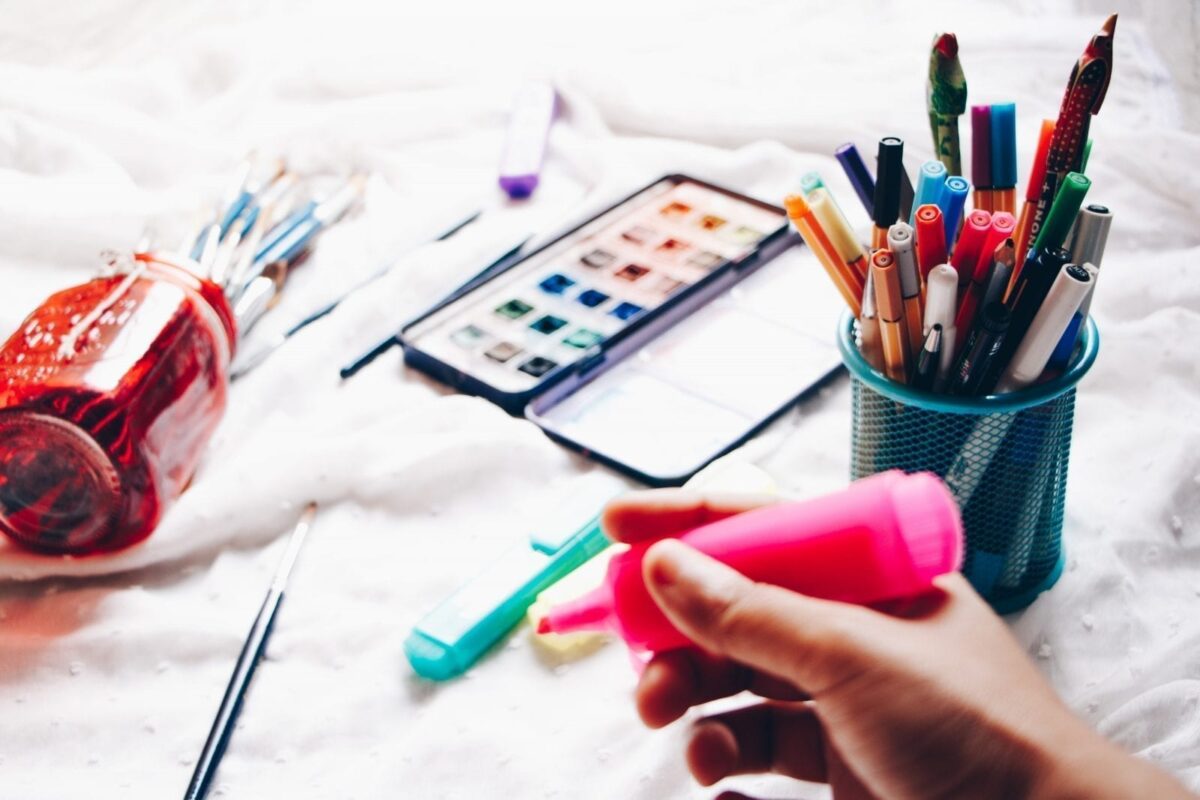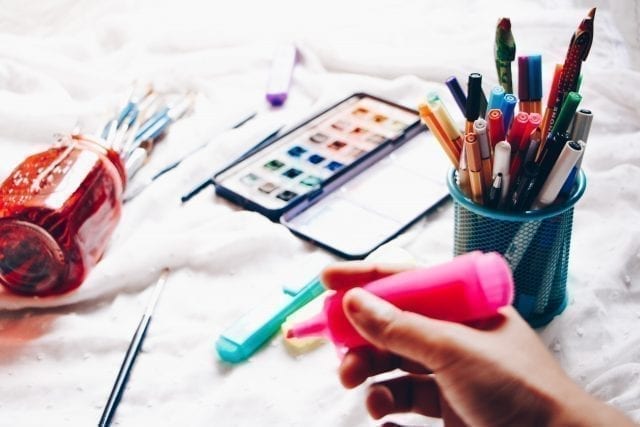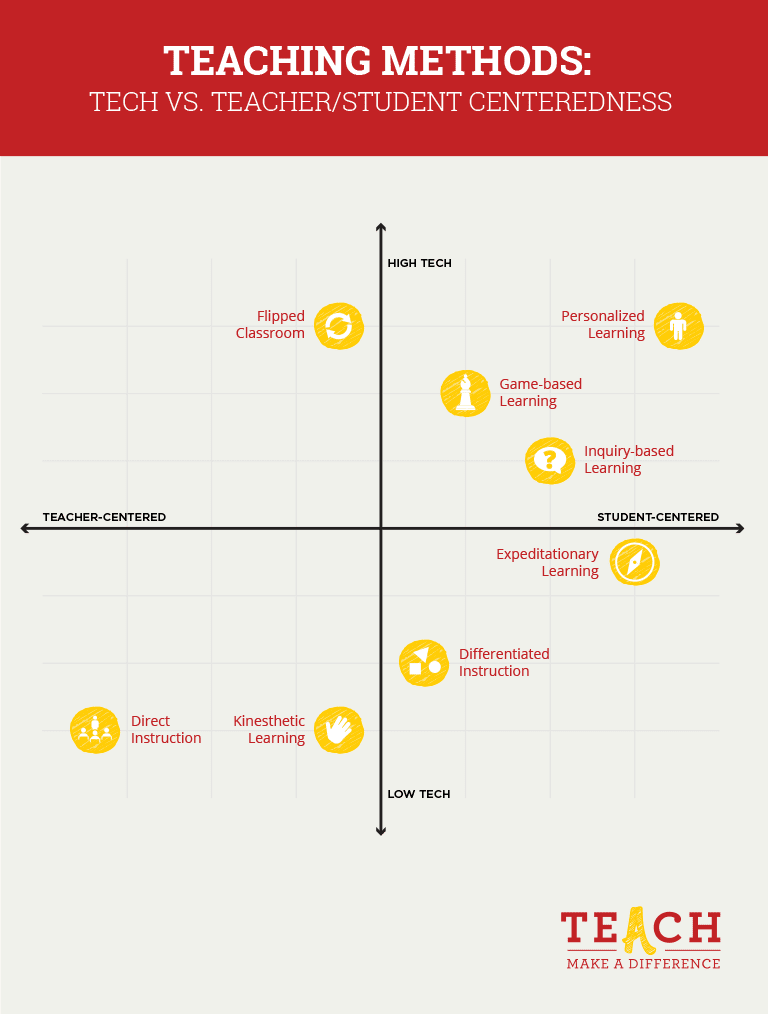
Teaching Styles: Everything you need to know about teaching methods and strategies
Have you ever thought about how each classroom teaches things differently? In this article, we answer what are teaching styles, why are there multiple teaching styles, what are the different styles, and which style works the best today?

What are teaching styles?
Teaching styles, also called teaching methods, are considered to be the general principles, educational, and management strategies for classroom instruction.
The use of different teaching styles started in the beginning of the twentieth century. This was due to the amount of research being poured into different learning methods. Once we understood that everybody learns differently, it became obvious that there need to be different teaching styles to accommodate the learning styles.
Two philosophers, John Locke (Some Thoughts Concerning Education) and Jean-Jacques Rousseau (On Education), developed different theories as to how to educate which lead us to have the idea of different teaching styles today. Locke saw the importance of developing a child’s physical habits first anything else. To Locke, this was essential to a child’s development. Rousseau believed that education should be more centered on a child’s interactions with the world and the teaching style should concentrate less on books.
Why have different teaching styles?
Why can’t everyone be taught the same way? Well, why can’t you learn something the same way as your partner or next door neighbor? Everybody learns different ideas at different times at different paces. Some people can learn something on the first try after being told what to do whereas others might need to have hands-on experience in order to learn and possibly repeat it a few times to really get the hang of things.
Different teaching styles are necessary because the students need to be able to learn what the teacher is teaching. However, the choice of teaching styles used can also depend on the school mission statement, the classroom demographics, the educational philosophy of the teacher, and most importantly, the subject area.
Types of teaching styles:
There are five main types of teaching styles and methods to choose from.
- The Authority method, also known as the lecture style, involves sitting and listening to the instructor speak about a pre-assigned topic while the students take notes and memorize to the best of their ability what is being said. This particular style is more popular in universities and some high schools due to a larger student population. However, less common in the standard classroom setting due to its lack of allowance of student participation and inability to meet individual needs. The Authority method, also known as the lecture style, involves sitting and listening to the instructor speak about a pre-assigned topic while the students take notes and memorize to the best of their ability what is being said. This particular style is more popular in universities and some high schools due to a larger student population. However, less common in the standard classroom setting due to its lack of allowance of student participation and inability to meet individual needs.
- The Demonstrator method, widely known as the coaching style, similar to the lecture style, The Demonstrator method tries to maintain authority in the classroom. Even so, instead of using only a verbal lecture to give information and teach, this style coaches students using gateways like multimedia presentations, class activities and demonstrations. For subjects like music, art, and physical education subjects, this style is perfect because the demonstration is usually necessary to acquire a full understanding of the subject. However, a downside is that there is little individual interaction between the teacher and students which makes it difficult to accommodate to personalized needs.
- The Facilitator style recognized also as the activity or action method, tries to encourage self-learning through peer-to-teacher learning. In contrast to the lecture style, teachers ask students to question rather than give them the answer. The goal is for students to develop a deeper understanding of the topic by using self-discovery and develop problem-solving skills. This technique is best used in small classroom settings because, as a facilitator, the teacher needs to interact with students on an individual basis, which can be difficult with a larger number of students.
- The Delegator style, or group method, is used for school subjects that require group work, lab-based learning, or peer feedback. For example, science classes and certain language learning classes. The teacher acts as a delegator, becoming an observer to promote peer collaboration and encourage student-to-student learning. The Delegator style is becoming more and more popular throughout many classrooms. However, some people consider other styles to be more proactive due to the fact that the group method removes the teacher from a position of authority.
- Last, but not least, the Hybrid method, also known as blended learning, is an integrated teaching style that incorporates personal preferences, individual personalities, and specific interests into their teaching. It’s popular in English, science, and religion classes because it’s easy to incorporate extra-curricular knowledge into a developed, deeper knowledge of a particular topic. Some argue that this style weakens the learning process because the teacher tries to be all things to all students.

Teaching style Inventory
Teaching styles can also be organized into four categories with two parameters each: a teacher-centered approach versus a student-centered approach, and high-tech material use versus low-tech material use.
Teaching Styles: Student-Centered Approach
In a student-centered approach to learning, teachers and students share the focus and interact equally while the teacher still maintains authority. This can be beneficial to students because group work is encouraged; thus, communication and collaboration are used and encouraged. However, due to the fact that students are talking, classrooms may be noisier and may be more difficult to manage.
One method to use is inquiry-based learning which makes the teacher more of a supportive figure (rather than completely authoritative) who can provide support and guidance throughout the learning process. By being an inquiry-based learning facilitator, the teacher and student undergo the learning process together with student learning lightly guided by the teacher. By being the personal model, comparable to the personal model in the direct instruction, the teacher acts as the guide and mentor to help enable students to learn by observation and copying the teacher’s actions. By using the delegator method, teachers act as a support for students, are able to answer questions and most importantly are there to provide a sense of freedom and independence for the student.
Another method commonly used is the cooperative learning style where students work in small groups and the teacher can act as the facilitator, where everyone learns together, or as the delegator, where the teacher gives more free-reign to the student while still pointing them in the right direction.
Teaching Styles: Teacher-Centered Approach
In the teaching styles, especifically the teacher-centered approach to learning, the students put their attention on the teacher, students work alone, and collaboration is prevented. This is great because students are, in theory, quiet and paying full attention to the teacher while being able to make individual decisions. However, a student may suffer in their communication skills and feel unable to ask questions due to the fact they normally work alone and quietly. Plus, this classic method is sometimes thought of as dull and uninteresting.
Direct instruction is a method that uses little technology and relies on lecturing. The teacher may take on the formal authority role, where the teacher is in power due to their senior and level of knowledge over the students. They may also take on the expert role where students can be referred to as “empty vessels” because they are viewed solely as receptors of information and knowledge. The other role a teacher can take on in the direct instruction method is that of a personal model. This method uses the teacher as a model of instruction, to lead by example, and students learn by observation.
Teaching Styles: High-Tech Approach
Many schools and classes are taking advantage of the recent advancements in technology which has enabled us to develop a high-tech approach to learning.
The flipped classroom is a high-tech idea developed in 2007 by two teachers who began to pre-record their lectures which allow students to learn from home by completing assignments to go along with the lectures. This is great if students want to work at their own pace, but if there’s a slow internet connection it’s near impossible to use this method.
Inquiry-based learning can involve technology by asking the students a question about the world and they have to do some research. The findings could be presented in the forms of a website, self-made videos, or PowerPoints.
Based on the man who founded Outward Bound, expeditionary learning is a project-based learning involving expeditions and engagement in in-depth topics that impact their schools, communities, and lives. This was created so students can see how problem-solving is happening in the real world, that is, the world around them. A student in NYC could study statistics about the pollution surrounding them or a student from Alaska could study the snow impact from where they live. G-Suite (Google Docs, Google Sheets, and Google Drive) is used for this method because it helps students collect and show research in a way that makes it easy for everyone.
Personalized learning is a relatively new style of teaching that, as the name gives away, is all about personalizing the student’s method of learning according to their specific interests and skills. It’s founded on the idea of student self-direction and choice. The assessments are also personalized and quite individual by using a competency-based progression. This means that once a student has mastered a certain skill or subject, they can move on to the next level, regardless of their current grade level. There is also an emphasis on college and career preparation involved because students work on their own, with a mentor (boss) guiding them along. The technology involved is, like the learning itself, quite personalized. However, everyone involved will need to have a certain comfort level with navigating online lessons and programs between the student and instructor.
Another high-tech learning option is game-based learning which encourages students to develop a “mastery” mindset rather than focus too much on grades. Students develop problem-solving skills by working on accomplishing a specific goal (also known as a learning objective) by choosing actions and different activities and then experimenting with them to achieve the goal. As students progress, they can earn badges and points, as they would in video games. Some of the software that makes game-based learning possible on the teacher’s part is 3DGameLab and Classcraft. Although this style of teaching isn’t completely student-centered, it’s still rather relatively focused on the student because they are able to work at their own pace and make independent choices while still in a gaming environment.
Low-Tech Approach
Some schools or teachers may not enjoy or have the money for high-tech learning and instead, they opt for a low-tech approach to teaching by using a technique called kinesthetic learning. Also known as tactile learning or hands-on learning, kinesthetic learning is a teacher-centered approach that uses the concept of multiple intelligences, the idea that everyone has a strong suit in certain intelligences than in others (i.e. better with words than math). Instead of lectures, students use physical activities to learn. For example, drawing, role-playing, and building. This isn’t as common of a teaching style one might think. However, this teaching style rarely uses technology by putting a stronger emphasis on movement and creativity. Because of this, it’s a cheap and screen-free teaching style.
Another low-tech teaching method is differentiated instruction. Although this is a student-centered teaching style that aims to meet a student’s specific needs, it is mostly implemented by the teacher. Used commonly with students with special needs, differentiated instruction became popular in the United States in 1975 when a law was passed that ensure every child has equal access to an equal education. Some examples of differentiated instruction could include having students read books at their own reading levels or offering different spelling tests to different students depending on their literacy ability. Due to the lack of necessity to use technology and the adaptability of the teaching style, it’s a low-key and traditional teaching style.

What teaching style is best for today’s students?
As a teacher, it’s difficult to cater to each student’s needs. Constructivist teaching style follows the theory that learning is an active, constructive, and valuable process. It carries with it the idea that people construct their own personal reality and any new information is given is then linked and connected to prior knowledge. Every person will bring with them cultural factors and past experiences to the table. Thus, any mental representation is made personal and individual. The constructivist teaching style assumes that all knowledge is constructed from information given in the past, regardless of how one is taught. It’s important to keep this idea in mind when choosing a teaching style.
Some students might learn better with being an empty vessel and having information, simply processed data, lectured to them. This is a form of passive learning and is commonly used when “teaching to the test,” meaning that the teaching style is structured to pass a certain exam like the ACT, for example.
Proven to be the most effective in a number of ways, an active learning style is best suited for interactive classrooms. That is to say, both the teacher and the student are engaged in the teaching style and learning process which helps the student gain knowledge, information modeled to be useful.
Do you have any fun teaching styles or strategies? What’s your favorite way that you were taught in school? Let us know in the comments below.













